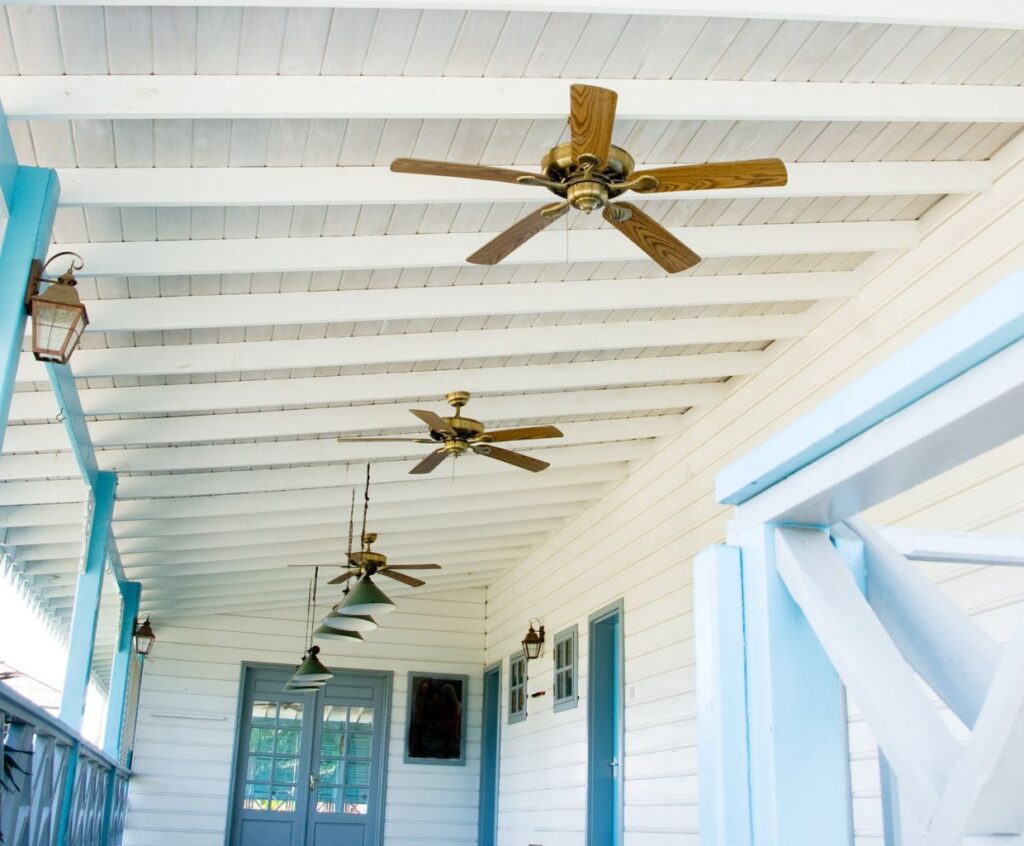Are Ceiling Fan Downrods Universal?
In the world of ceiling fans, downrods are the unsung heroes. They have a lot of essential jobs to do, but they don’t get much credit. So we’re here to give them the recognition they deserve.
Ceiling Fan Downrods are also called down rods or hanging rods. The metal pipes hang from a ceiling fan and attach to the motor assembly. The length of your downrod will depend on your ceiling height and whether you have a standard or high-ceiling fan.
Contents
Ceiling Fan Downrods has three main functions:
- Helping a ceiling fan to spin smoothly and efficiently by lowering the fan’s center of gravity and increasing its distance from the ceiling
- Reducing wobble in the fan blades by helping them stay on track as they rotate around their central axis
- Increasing airflow in your home by making sure that air circulates throughout your room more effectively
Do you need to match the length of your ceiling fan downrods to the height of the ceiling?
The answer is no. The length of your downrod isn’t as important as the diameter. Many people think that if your ceiling is 10 feet tall, you need a 10-foot downrod for your ceiling fan. But that’s not true! It’s better to have a longer downrod than ideal for your ceiling because it will provide more flexibility as you use the fan over time.
The best way to determine the proper length of downrod for your ceiling fan is by measuring the distance from the center of its blades to the top of your light fixture in feet. If this number is more than 10 inches, then you’ll need a longer downrod. If you want to keep things simple, get a downrod one foot longer than your ceiling height. For example, if your ceiling is 9 feet tall, you should use an 11-foot downrod. This will provide enough flexibility for most people’s needs without having them worry about the exact length of their downrod.
Choosing the right length of downrod can be tricky. But if you follow this guide, then you’ll be able to find the perfect fit for your ceiling fan without spending too much time or money on it.
No products found.
Do all Ceiling Fan Downrods fit all fans?
The short answer is yes. All downrods will fit any ceiling fan.
The longer answer is that you may need to modify your ceiling fan slightly to accommodate the longer downrod. This is particularly true of older fans. In some cases, however, you might be able to add a longer downrod without any modification at all.
A longer downrod will give your fan more reach and allow you to raise it higher into the room. This can be useful if you have high ceilings or want to keep your fan closer to the ground. A shorter downrod will keep your fan closer to the ground, but it might not be able to reach as high as some other options.
If you want to add a downrod to your ceiling fan, you’ll need to know the size of the fan. The size of the downrod will depend on the size of your fan.
So what are we talking about when we say “size?” It’s not just the size of the fan; it’s also the blade pitch, which is how far apart the blades are from each other. And even then, another number can affect whether you can use a certain downrod: blade span (or blade sweep).
- Blade Pitch: The distance between each blade along its length (e.g., 2 inches). This measurement is combined with blade span (or blade sweep) to determine whether or not a specific downrod works for your specific fan.
- Blade Span/Sweep: The measurement from tip-to-tip across all blades (e.g., 12 inches). This measurement determines whether or not a particular downrod fits in your specific fan’s housing —and if it can do so without hitting any of the blades. For example, a fan with a blade span/sweep of 12 inches will be compatible with a downrod measuring 6-12 inches in length—but not one that’s 24 inches long. And then other factors can affect whether or not you can use certain downrods, such as: The weight of your fan and its motor. If either one is too heavy for the specific model of downrod you’re using, it could fall over or create too much stress on the electrical wiring of your fan.
The weight of the ceiling joist in your home. If it’s too heavy for the downrod you’re using, then your fan may not be able to support itself and will fall over or wobble when running.
What’s the difference between Hunter downrods and other brands?
The answer is that there isn’t much difference. Hunter is the most popular brand in the US, so you’ll find their downrods in most stores. But other companies make downrods that work just as well. The only thing to remember is that if you buy one from another company, it might not fit into your fan correctly because of slight differences in design.
We recommend buying a Hunter downrod if you can find it, but otherwise, look for one with the exact dimensions as your current hunter one. You can use any length of hunter downrod with any Hunter ceiling fan. Because Hunter ceiling fans are compatible with many different types of downrods, even if you have an unconventional room layout or height requirements for your home’s ceilings, it won’t be hard to find one that will work for you!


